
Reaction Kinetics Mechanisms and Catalysis
Scope & Guideline
Innovating the Future of Reaction Kinetics
Introduction
Aims and Scopes
- Catalyst Development and Optimization:
The journal emphasizes research on the synthesis, characterization, and performance evaluation of novel catalysts. This includes studies on metal-organic frameworks, zeolites, and nanocomposites that enhance catalytic activity for various reactions. - Reaction Mechanisms and Kinetics:
A significant portion of the research published focuses on elucidating the mechanisms of chemical reactions. This involves kinetic modeling, thermodynamic analysis, and the application of advanced computational methods to understand reaction pathways and dynamics. - Sustainable and Green Chemistry:
The journal promotes research that contributes to sustainable practices in chemistry, including the development of eco-friendly catalysts and processes that minimize environmental impact, such as photocatalysis and biomass valorization. - Photocatalysis and Environmental Applications:
A core area of focus involves the application of photocatalytic processes for environmental remediation, including the degradation of pollutants and dyes, which aligns with global sustainability goals. - Advanced Analytical Techniques:
Research utilizing advanced analytical techniques, such as in situ spectroscopy, thermogravimetric analysis, and computational simulations to investigate catalytic processes and reaction kinetics is prevalent.
Trending and Emerging
- Nanostructured and Hybrid Catalysts:
Recent publications highlight a growing interest in the development of nanostructured and hybrid catalysts, which combine multiple materials to enhance catalytic performance and efficiency. - Electrocatalysis and Renewable Energy:
There is an increasing trend in studies focusing on electrocatalysis, particularly for hydrogen production and CO2 reduction, aligning with the global emphasis on renewable energy and sustainability. - Biomass Conversion and Green Chemistry:
The journal is seeing a rise in research dedicated to biomass conversion processes, emphasizing the valorization of waste materials and the production of biofuels, which reflects a broader shift towards sustainable practices. - Computational and Theoretical Approaches:
An emerging theme involves the use of computational chemistry and theoretical modeling to predict reaction outcomes and optimize catalytic processes, showcasing the integration of traditional chemistry with modern computational tools. - Advanced Photocatalytic Systems:
Research on advanced photocatalytic systems, particularly those utilizing novel materials or hybrid structures for environmental applications, is gaining momentum, reflecting the increasing need for effective pollution remediation strategies.
Declining or Waning
- Traditional Heterogeneous Catalysis:
There appears to be a waning interest in more conventional heterogeneous catalytic systems, particularly those that do not incorporate novel materials or advanced techniques. Researchers are increasingly exploring more innovative approaches. - Simple Kinetic Studies without Mechanistic Insights:
There is a noticeable decline in papers focusing solely on basic kinetic studies that do not delve into the underlying mechanisms or advanced modeling approaches. - Low-Temperature Reactions:
Research on low-temperature catalytic reactions has decreased, possibly due to a shift towards high-temperature processes that offer greater efficiencies and product selectivity.
Similar Journals
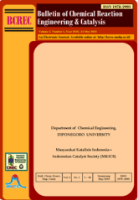
Bulletin of Chemical Reaction Engineering and Catalysis
Fostering Collaboration in Chemical Science DiscoveriesBulletin of Chemical Reaction Engineering and Catalysis is a distinguished open-access journal published by UNIV DIPONEGORO, focusing on pivotal advancements in the fields of chemical reaction engineering and catalysis. Since its inception in 2008, this journal has served as a vital platform for disseminating cutting-edge research, catering to a diverse readership that includes researchers, professionals, and students in chemical engineering and related disciplines. With its dedication to publishing valuable insights, the journal has been indexed in Scopus and boasts respectable rankings across various categories, including Q3 in Chemical Engineering (miscellaneous) and Q4 in Catalysis as of 2023. It continues to foster scholarly dialogue and collaboration by providing an accessible means for contributors to share their findings. Operating from Semarang, Indonesia, this journal underscores its commitment to advancing knowledge in chemical sciences, making it an essential resource for those engaged in the study and application of chemical processes.

Chem Catalysis
Advancing the frontiers of catalysis science.Chem Catalysis is a leading academic journal published by CELL PRESS, specializing in the diverse and dynamic field of chemistry. Since its inception in 2021, this open-access journal has rapidly ascended to prominence, holding Q1 quartile rankings in prestigious categories including Chemistry (Miscellaneous), Organic Chemistry, and Physical and Theoretical Chemistry. With its Scopus rankings placing it in the top tiers—Rank #14 in Organic Chemistry and Rank #12 in Miscellaneous Chemistry—Chem Catalysis serves as a vital platform for disseminating innovative research and catalysis science. Researchers and professionals seeking to stay abreast of cutting-edge developments will find this journal indispensable for advancing their knowledge and contributions to the field. Located in Cambridge, Massachusetts, Chem Catalysis is committed to fostering collaboration and innovation in the chemical sciences, paving the way for breakthroughs that address global challenges.

Catalysts
Innovating Catalytic Solutions for Tomorrow's ChallengesCatalysts is a leading academic journal in the field of catalysis, published by MDPI since 2011 and well-regarded for its commitment to open access publishing. Based in Switzerland, this journal delivers innovative research and reviews that span various aspects of catalysis, from heterogeneous and homogeneous catalysis to the development of novel catalytic systems. With a commendable impact factor and a notable Q2 ranking in both Catalysis and Physical and Theoretical Chemistry categories, Catalysts plays a critical role in advancing the scientific discourse in these fields. The open-access model ensures that all research articles are readily accessible to researchers and professionals worldwide, fostering collaboration and accessibility to high-quality scientific literature. As the journal continues to publish cutting-edge studies up to its convergence in 2024, it remains an essential resource for anyone involved in catalysis research, from seasoned professionals to emerging scholars.
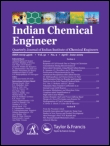
Indian Chemical Engineer
Pioneering Insights for Industry and Academia.Indian Chemical Engineer, published by Taylor & Francis Ltd, stands as a reputable journal in the field of chemical engineering, encompassing a wide range of topics pertinent to both academia and industry. With an ISSN of 0019-4506 and an E-ISSN of 0975-007X, this journal has been a key resource for researchers and professionals since its inception in 1992, undergoing a significant evolution from 2009 to 2024. Currently ranked in the Q3 category of chemical engineering (miscellaneous) in 2023, it reflects a dedicated commitment to disseminating innovative research and insights within the discipline. The journal is indexed in Scopus, achieving a rank of 148 out of 273, which denotes its growing influence in the field with a 45th percentile placement. Although currently not an open-access publication, it offers valuable content that contributes extensively to the advancement of chemical engineering research and education. Researchers, professionals, and students alike are encouraged to engage with this publication to stay at the forefront of industry advancements and academic discussions.
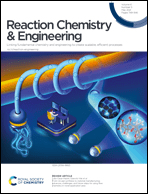
Reaction Chemistry & Engineering
Connecting Scientists for a Sustainable Chemical FutureReaction Chemistry & Engineering is an esteemed journal published by the Royal Society of Chemistry, dedicated to advancing the field of chemical engineering. With a focus on pivotal topics including catalysis, process technology, and fluid flow, this journal serves as a critical platform for researchers and professionals seeking to disseminate innovative findings and methodologies. As of 2023, it boasts impressive impact factors, ranking Q2 in Catalysis and consistently appearing in the Q1 categories for several related fields, thus recognizing its influence and relevance in the scientific community. With Scopus rankings placing it among the top 30 journals in multiple chemical engineering categories, Reaction Chemistry & Engineering encourages open dialogue and collaboration among scientists aiming to overcome contemporary challenges in chemical processes. This journal is vital for anyone involved in the development and application of chemical engineering, providing essential insights and fostering progress in this dynamic discipline. Explore the latest research and contribute to future innovations by engaging with the cutting-edge work presented in Reaction Chemistry & Engineering.

CCS Chemistry
Pioneering Discoveries in the World of ChemistryCCS Chemistry, published by the esteemed Chinese Chemical Society, is a leading open-access journal dedicated to advancing the field of chemistry. Since its inception in 2019, the journal has rapidly gained recognition, achieving a remarkable impact factor that places it in the prestigious Q1 category in Chemistry (Miscellaneous) as of 2023. With a Scopus ranking of #41 out of 408 in General Chemistry, CCS Chemistry represents the top 10th percentile in its category, reflecting its commitment to high-quality research and innovation. The journal serves as a vital platform for researchers and professionals to share their findings, showcase cutting-edge methodologies, and engage with the latest developments in various chemistry subfields. Accessible to a global audience, CCS Chemistry ensures that groundbreaking research is available without barriers, making it an indispensable resource for students and academics aiming to stay at the forefront of chemical sciences. For further details, submissions, and access to published articles, please visit the journal's website.
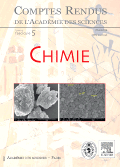
COMPTES RENDUS CHIMIE
Advancing Chemical Knowledge, One Article at a Time.COMPTES RENDUS CHIMIE, published by the prestigious Académie des Sciences in France, stands as a significant journal in the fields of chemistry and chemical engineering. With an ISSN of 1631-0748 and an E-ISSN of 1878-1543, this open-access journal has been committed to disseminating high-quality research since its transition to open access in 2020. Featuring a diverse array of studies, the journal covers innovative research trends and applications, while maintaining a Q3 category ranking in both Chemical Engineering (miscellaneous) and Chemistry (miscellaneous) as of 2023. Its Scopus rankings, positioning at #251 out of 408 in general chemistry and #169 out of 273 in general chemical engineering, highlight its growing impact within the scientific community. Authored by a global cohort of scientists and researchers, COMPTES RENDUS CHIMIE is dedicated to the advancement of knowledge and sharing insights that are vital for ongoing research and development in the chemical sciences. Located in the heart of Paris at 23 Quai de Conti, 75006, France, the journal is an essential resource for those passionate about chemistry and engineering disciplines, fostering collaboration and innovation across the world.

JOURNAL OF CHEMICAL SCIENCES
Fostering Collaboration in the World of Chemical SciencesThe JOURNAL OF CHEMICAL SCIENCES, published by the Indian Academy of Sciences, is a premier academic journal that serves the global community of chemists and researchers. With an ISSN of 0974-3626 and an E-ISSN of 0973-7103, this journal is pivotal in disseminating high-quality research across diverse areas of chemical sciences. As of 2023, it holds a respectable Q3 ranking in the field of Chemistry (miscellaneous) and ranks #215 out of 408 in General Chemistry according to Scopus, reflecting its commitment to advancing the discipline. Operating in an open-access format, the journal ensures that research findings are readily accessible to a broader audience, fostering collaboration and innovation. Established in 1980 and continuing to evolve, the journal's scope encompasses fundamental and applied chemistry, and aims to bridge gaps between theoretical and practical applications. With a mission to support the scientific community, the JOURNAL OF CHEMICAL SCIENCES is an essential resource for researchers, professionals, and students alike, providing a platform for the exchange of groundbreaking ideas and discoveries.
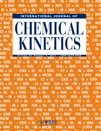
INTERNATIONAL JOURNAL OF CHEMICAL KINETICS
Advancing the frontiers of chemical dynamics.The INTERNATIONAL JOURNAL OF CHEMICAL KINETICS, published by Wiley, is a leading journal that covers significant advancements and fundamental research in the field of chemical kinetics. Established in 1969, this peer-reviewed journal not only emphasizes kinetics in solution and gas-phase reactions but also addresses theoretical approaches and experimental applications in various branches of chemistry including biochemistry, inorganic chemistry, organic chemistry, and physical chemistry. As of 2023, it holds a respectable Q2 ranking in Inorganic Chemistry and Q3 in the other chemistry categories, reflecting its substantial impact on the scientific community. With a commitment to disseminating high-quality research, the journal is an indispensable resource for researchers, educators, and students seeking to deepen their understanding of chemical dynamics. Its compilation of articles and reviews ensures that it remains a cornerstone for innovative studies and discussions within the field.

Macromolecular Reaction Engineering
Uncovering Insights in Macromolecular ChemistryMacromolecular Reaction Engineering is a leading academic journal published by WILEY-V C H VERLAG GMBH, dedicated to advancing the field of chemical and polymer engineering. Established in 2008, this journal focuses on innovative research and developments in macromolecular chemistry, highlighting the intricate processes involved in polymer reactions and engineering applications. With an ISSN of 1862-832X and an E-ISSN of 1862-8338, it serves as an essential resource for researchers, professionals, and students seeking insightful contributions in its diverse category quartiles, which include Q3 rankings in Chemical Engineering, Chemistry, and Polymers and Plastics as of 2023. Although it currently does not offer Open Access options, the journal is committed to publishing high-quality studies that align with current industrial and academic standards, promoting knowledge exchange in the field. By continuously evolving its scope, Macromolecular Reaction Engineering plays a pivotal role in shaping the future of macromolecular research and engineering practices.